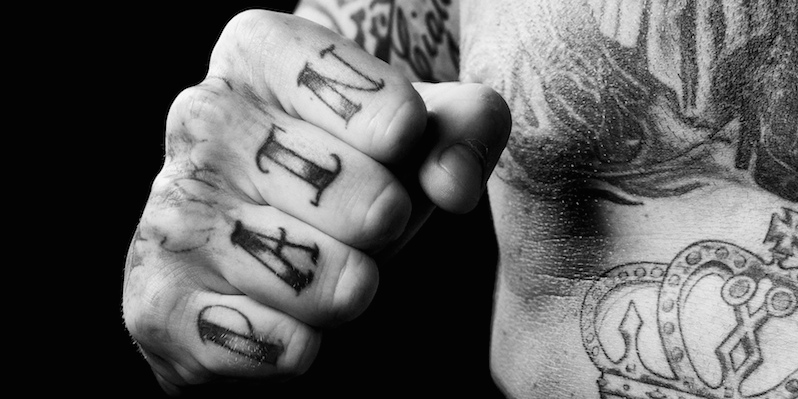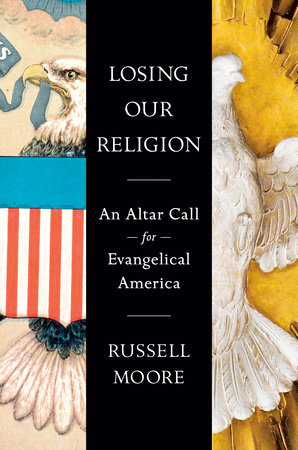U.S. Sen. Rand Paul (R-Ky.) often tells audiences, “Republican Party events need more people with tattoos.” It struck me, as I heard him say this, that this is kind of what evangelical Christians ought to be saying about our churches. It struck me further when I read this tribute my former student Spencer Harmon wrote about his new wife and her past that this is precisely the issue facing the next generation of the Bride of Christ, the church.
What Paul (the senator, not the Apostle) means, it seems, is that his party, if it is to have a future, shouldn’t count on just doing the same thing it’s always done, and it can’t rely on people who look like what people think Republicans ought to look like. The party must expand out to people whose pictures don’t currently show up in a Google image search for “Republican.” There are people, Paul says, who agree with the Republican message, in theory, but who pay no attention to it because they assume they aren’t the kind of people the party wants to talk to.
Paul isn’t alone in this. His colleague Lindsey Graham (R-S.C.), who disagrees sharply with Paul on foreign policy and other issues, quipped recently, “They aren’t making enough angry white men for our party to have a future,” unless the party reaches new constituencies.
My interest here isn’t the Republican Party, or the Paul or Graham wings of it and their ideas for reinvigorating a political movement, or even whether their critique of the political situation is accurate. Instead, Paul’s imagery reminded me of a burden I have for the church of Jesus Christ to, as Jesus puts it, “seek and to save that which was lost.”
I don’t like tattoos, and I can’t emphasize that enough (especially if you’re one of my children, one day, reading this). But if the Spirit starts moving with velocity in this country, our churches will see more people in our pews and in our pulpits with tattoos.
Now, what I don’t mean by that is that we need to more Christians to tattoo crosses or Bible verses or Psalms in Hebrew or the Apostles’ Creed or the sinner’s prayer across their arms or necks. That’s not a sign of gospel awakening; it’s just, at best, personal fashion and, at worst, more marketing in an already over-marketed evangelical church.
Tattoos don’t mean what they used to. They don’t signify necessarily, by a long shot, the kind of “tough” image they used to. I spoke with a friend who mentioned that as he walked through an upscale resort in south Florida, almost everyone in the pool was wearing ink. But, what if the tattoos, in some cases, do signify a tough back-story? That’s what I want to see more of.
I first saw this not in a “relevant” urban church, but in the most stereotypically “hellfire and brimstone,” King James Version, gospel hymn-singing southern revivalist church you could imagine.
As a child, I remember seeing a man sitting in front of me, with his arm resting on the pew. The arm was covered with a large tattoo of a woman who was, well, let’s just say she didn’t fit what we would consider biblical standards of modesty in her attire. I couldn’t believe I was seeing this, in my church, so I nudged my grandmother and pointed, as if to say, “Can you believe this?”
My grandmother whispered, “Yes, honey. He’s doesn’t know the Lord yet, and he’s had a hard life. But his wife has been trying to get him to come to church for a long time, and we’ve all been praying for him. He’s not trying to be ugly to anybody. He just doesn’t know Jesus yet.”
I’ll never forget that “yet.”
With that one word, she put before me the possibility that this hardened ex-military man with the unclothed lady tattoo might one day be my brother-in-Christ. And, in time, he was. I suppose as time went on, this new Christian started to see that his tattoo was potentially a stumbling block, because I started to see it less and less as he started to wear long sleeves to church.
Tattoo removal wasn’t a booming technology then, but, if I had to guess, this man started to see that tattoo as emblematic of an old life he’d left behind. He didn’t need a tattooed pastor (necessarily), but he needed a church that didn’t see his tattoo as evidence of a life too far gone, of someone too rowdy to be loved with the call to repentance and faith.
I think about him often when I see people in the local coffee shop or walking down the streets with tattoos. Some of the markings are of are of blood-drenched skulls. Some of them are slogans of a hedonistic quest for pleasure. Some are threatening others, demonstrating their fearsomeness. Some are pagan, or even occult. I am chastened by how rarely my first thoughts are rooted in my grandmother’s gospel wisdom.
Not everyone with tattoos is an unbeliever or has lived a hard life, of course. But the larger point remains, how many people don’t listen to our gospel message because they assume they don’t “look” like the kind of people who would follow Jesus?
And, shamefully, how many times do we filter out our gospel preaching to people who would, upon baptism, be able to pose nicely for our Sunday school booklet illustrations? How often do we assume that the good news of Christ is a message just like a political campaign or a commercial brand, targeted toward a demographic of a certain kind of buyer?
The Gospels consistently tell us that the preaching of Jesus drew in those who had hard stories, who had made bad decisions, or faced horrible situations that seemed to have wrecked their lives forever: prostitutes, Roman collaborators, leprous outcasts, the demon-possessed, and on and on. That’s because, he tells us, the Spirit builds the kingdom not with the noble or the powerful but with the lame, the marred, the hopeless (Lk. 14:21-23; 1 Cor. 1:26-29).
If we’re really carrying the gospel to the whole world, this means there are going to be people listening, whose bodies carry messages contrary to the Word of God. So did our hearts and psyches.
That young woman with the Wicca tattoo, or the old man with the Hell’s Angels marking, they may wonder, as they feel the pull of the gospel, “How can I enter with this visible reminder on me of my past?” That question is the same we all had, regardless of how “respectable” we looked when we came to Christ: “Deep is the stain that we cannot hide? What can avail to wash it away?”
Jesus will build his church, with us or without us. But if we are going to be faithful to him, we must share his mission. This means we don’t just talk about lost people, we talk to them. And we don’t talk to them as enlightened life-coaches promising an improved future but as crucified sinners offering a new birth.
If the Spirit starts breathing this burden into us with power, we’re going to see churches filled with people who never thought they fit the image of “Christian.” We’ll see that the markings on the flesh, whatever they were, count for nothing, but that what counts is a new creation (Gal. 6:15).
We’ve come not to call the righteous, but sinners to repentance. We’ve come to call not just those who look like whatever Christians are assumed to look like, but the whole world. If the church is powered by the gospel, then sometimes the Body of Christ has tattoos.








